To be an NFL coach is to be a genius when points are scored and out of your intellectual depth when they are not. Unless you play into February, your star players don't touch the football enough, you never convert enough third downs and your defense is never aggressive enough.
The armchair offensive coordinators in Indianapolis had a few questions about star running back Jonathan Taylor’s touches following the Colts' tightly contested 38-31 loss against the Tampa Bay Buccaneers in Week 12. In the four games preceding the showdown with the Buccaneers, the Colts were, arguably, the best rushing offense in the NFL.
On 126 attempts between Weeks 8-11, Indianapolis ranked first in the league in expected points added per rush, rushing grade (90.7), yards per carry (6.0) and the rate of attempts that converted a first down or touchdown.
Click here for more PFF tools:
Rankings & Projections | WR/CB Matchup Chart | NFL & NCAA Betting Dashboards | NFL Player Props tool | NFL & NCAA Power Rankings
Last Sunday’s game was a clash of styles, with Tampa Bay fielding one of the NFL's best run defenses. Over the course of the 2021 season, the Bucs rank sixth in expected points allowed per rush, and 58% of their run-defense snaps have ended in a stop — a play that constitutes a “win” for the defense. Teams don’t often try to attack this unit on the ground, with Tampa Bay having faced the fewest rushing plays in the NFL.
Ultimately, Indy was productive on the ground, finishing with a touchdown and 89 yards on 18 carries (quarterback scrambles removed). At the heart of the issue, I would guess that any complaints about the playcalling are rooted more in a general distrust of quarterback Carson Wentz than anything related to Taylor. On a fundamental level, there aren’t many times I would entertain any critiques of an offense that scores 31 points.
Given head coach Frank Reich’s illuminating comments Monday, though, I thought it would make for an interesting exercise to look at how the game played out, and add some context to all the ways the run game (and how defenses fit it) influences the decision-making matrix in a play caller’s head.
Not often you get a coach that goes this in depth—unprompted—to explain the run/pass ratio vs. Bucs. A lot of insight here.
“Didn’t have many regrets on the way this game was called, I’m not gonna lie.”
If 1 regret, Frank Reich says he wishes he would’ve thrown sooner. #Colts pic.twitter.com/15YhUaYZry
— Taylor Tannebaum (@TaylorTannebaum) November 29, 2021
The Box Count
| Formation | % of Snaps With a Loaded Box | Yds Per Carry | % of Yds Before Contact |
| Doubles, Y-Attached | 80% | 4.5 | -11% |
| Doubles, Multiple TEs | 71% | 6.8 | 21% |
| Trips, Y-Attached | 100% | 5.0 | 30% |
| Trips, Multiple TEs | 100% | 2.0 | 50% |
The most important part of Reich’s comments centered around the fact that Indianapolis has to be creative in the run game as a single-back offense. If you’re a listener of PFF’s Two High Podcast (which I would highly recommend, as an impartial party), you’ve often heard conversations about trading the threat of extra gaps between the tackles in two-back offenses in order to spread the defense out in a single-back world.
To make up for the lost variety in the run game, offenses need to use motion (think of Sean McVay’s jet action), formations (think of Bruce Arians’ blocking wide receivers in stacked and bunched formation sets), quarterback runs (think of the Eagles’ zone-read game) or the threat of the pass (think of Kansas City’s RPO packages).
Each of these innovations is necessary in single-back sets because an offense needs to have mechanisms available to manipulate the defenders on the second level. The Buccaneers, in spite of how little teams want to run the ball against them, rank sixth in the NFL in “middle of field closed” snaps — meaning there’s one high safety. With only one safety deep, there’s an extra second-level defender loading up the box.
Now, there’s no rule that says an offense can’t run into a loaded box, and if you have a running back of Taylor's caliber, you’ll see plenty of it. There’s value in going nose to nose with a defense and running right into its teeth, establishing that phase of offense. What ultimately happens, though, is the running back has more responsibility to create offense for himself. This season, Indianapolis has had 95 attempts in 11 personnel against a loaded box, and 73% of its 3.9 yards per carry have come after contact.
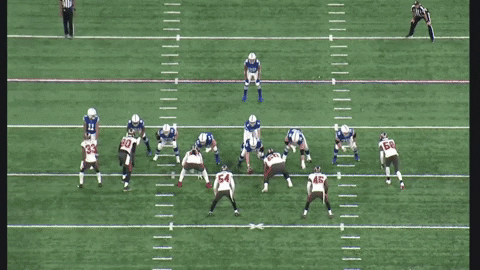
Winning and Losing One-on-Ones
Indianapolis Offensive Line | Week 12
| Player | Run-Blocking Snaps | Run-Blocking Grade | Snaps With a Run-Block Loss |
| Eric Fisher | 18 | 59.6 | 3 |
| Braden Smith | 18 | 58.2 | 3 |
| Quenton Nelson | 18 | 56.7 | 4 |
| Mark Glowinski | 17 | 74.3 | 3 |
| Ryan Kelly | 18 | 55.6 | 3 |
Running into a loaded box means one defender won't be blocked, and the running back must create offense by making that player miss. In order to get to that point, each offensive lineman has to win against the defensive lineman he’s across from — controlling the angle of the block, at minimum. A loss in just one of those one-on-ones means the run concept is likely stuck on the tarmac.
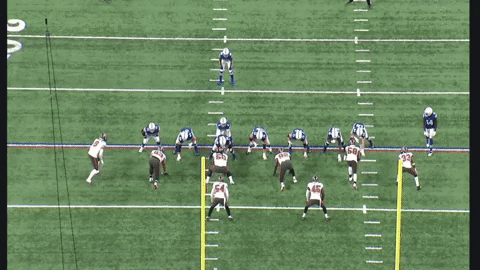
Any time an offensive lineman loses that battle, especially between the guards, the running back has to change direction (typically away from the point of attack), and the likelihood that a defense makes a tackle near the line of scrimmage skyrockets. Tampa Bay kicked Indianapolis’ tails up several times — sometimes by slanting across the face of blocks and other times with physicality — to reset the line of scrimmage in the backfield.
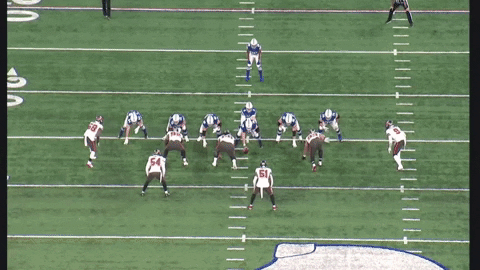
In these run-blocking losses, it's easy to see how small the margins for error are. With every other lineman occupied, there’s no one available to correct for missed blocks.
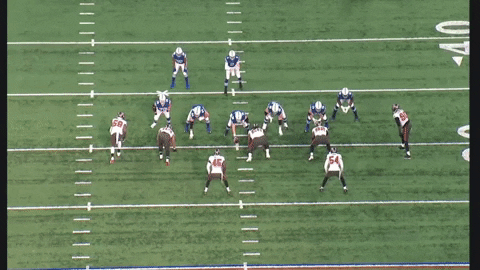
Controlling the Unblockable with RPOs
If the offensive linemen are struggling to create movement up front and the running back is fighting for his life to find positive yardage, an offense can try to create some relief by “reading” the unblockable defender. Theoretically, most RPOs are called to hand the football off, with the passing element attached to punish a defense for denying the handoff — just as a pick-and-roll in basketball is designed to manufacture layups first, and open threes if a defense collapses into the paint.
Tampa Bay was at peace with conceding the pass, trying to keep the ball out of Taylor’s hands. Wentz had 10 pass attempts on Indianapolis’ 13 RPO snaps in Week 12, a season-high. Wentz hadn’t thrown more than five passes on RPOs since Week 8 against Tennessee, to illustrate Tampa’s commitment to fitting every gap.
Indianapolis averaged 4.6 yards on those passing attempts, which ought to be deemed a success when considering the concepts are extensions of the run game. The passing concept attached to most of Indianapolis’ run was Stick, which gives one receiver a speed out (to widen the defense) and the other a hitch (to sit in the vacated window).

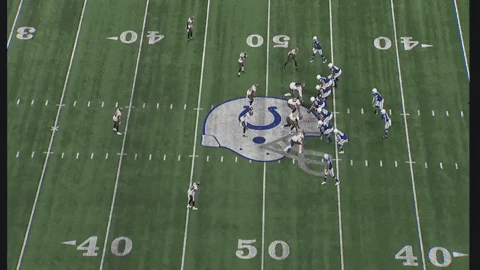
Almost every time Indianapolis called it, the hitch was wide open. It can be enticing to lean heavily on that throw and call the play more often, but the concept is designed to attack zone coverage. If Indy calls it too often, and Tampa Bay runs Cover 1 in response, the tight coverage negates the hitch.
Play Action, Football’s Judo
Indianapolis on Play-Action Dropbacks | Week 12
| Play-Action Dropbacks (No RPO) | 9 |
| Passing Grade | 91.1 |
| Yds Per Attempt | 12.0 |
| Average Depth of Target | 15.8 |
| Passer Rating | 107.6 |
Now, we’ve established that Tampa Bay wants to crowd the line of scrimmage. The spread looks didn’t loosen up any space for the running back to consistently create yardage, offensive linemen are having a hard time against the likes of Vita Vea and William Gholston on the interior, and there weren’t enough RPO completions in the world to put second-level players in true conflict.
The best way to create doubt in a linebacker’s mind from here is to throw the ball over his head after a hard play fake, and Wentz’s passing grade on play-action dropbacks led all quarterbacks in Week 12.
With the tight splits from receivers, and the respect the Bucs had for Taylor’s abilities, the linebackers and safeties near the line of scrimmage needed to loosen up their coverage to gain vision on where the running back may be headed. After the fake, receivers had already released behind coverage defenders and put strain on the three deep defenders to navigate the verticals and crossers over the heads of the second-level players.
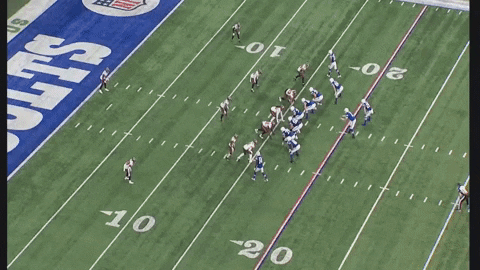
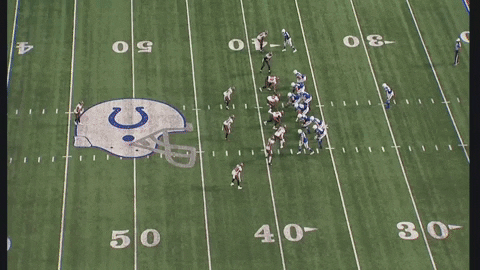
Every one of these factors and concepts has to be carefully considered against a defense selling out to mitigate the effect of the run game. The decisions Reich made, based on what the Buccaneers tried to do to his offense, were right almost every time. Those 31 points weren’t scored by serendipity, but by playing a deliberate game of chess that required leaning more often on Wentz than Taylor.
Reich says he’d do it all over again, and I’d be confident that it’ll work out just as well. In fact, it would likely end in a victory the next time.
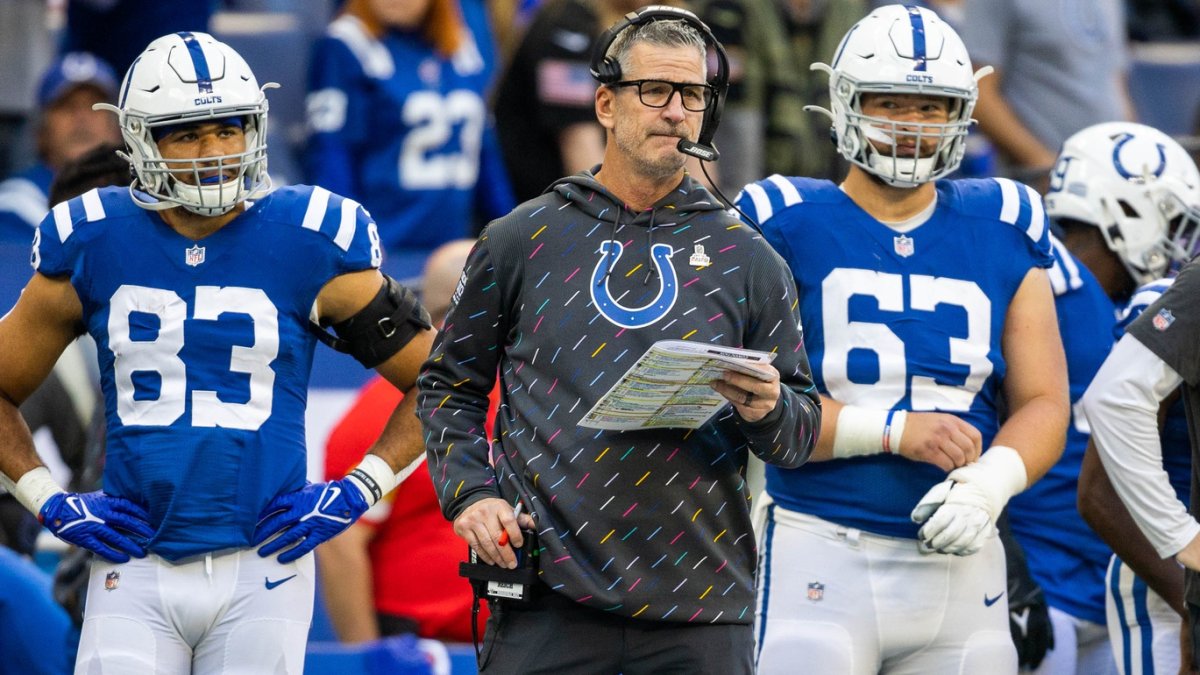
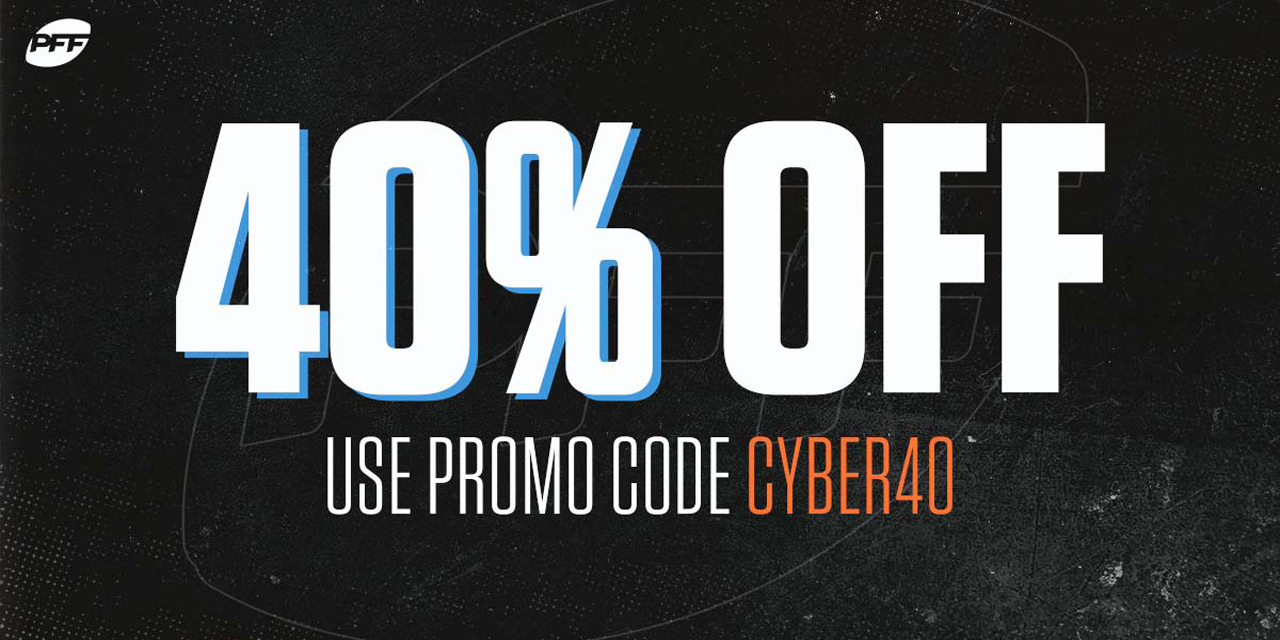


 © 2024 PFF - all rights reserved.
© 2024 PFF - all rights reserved.